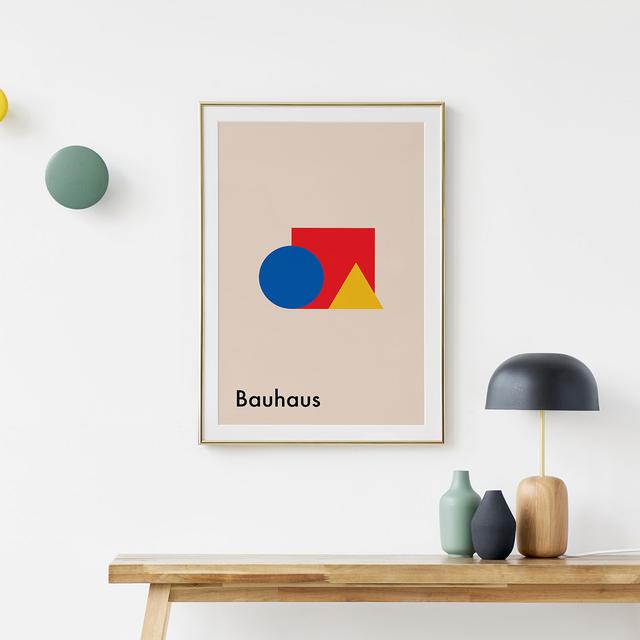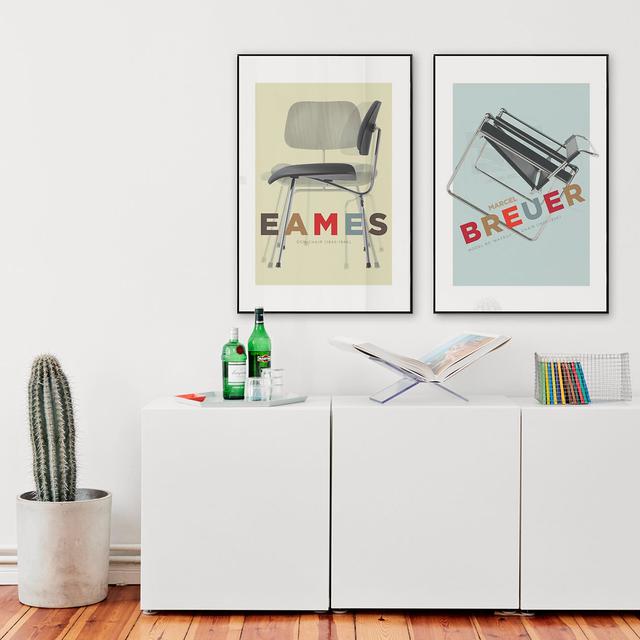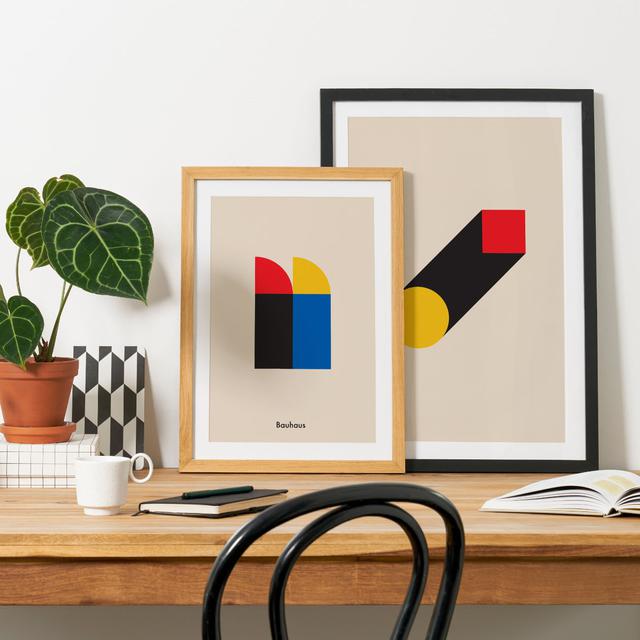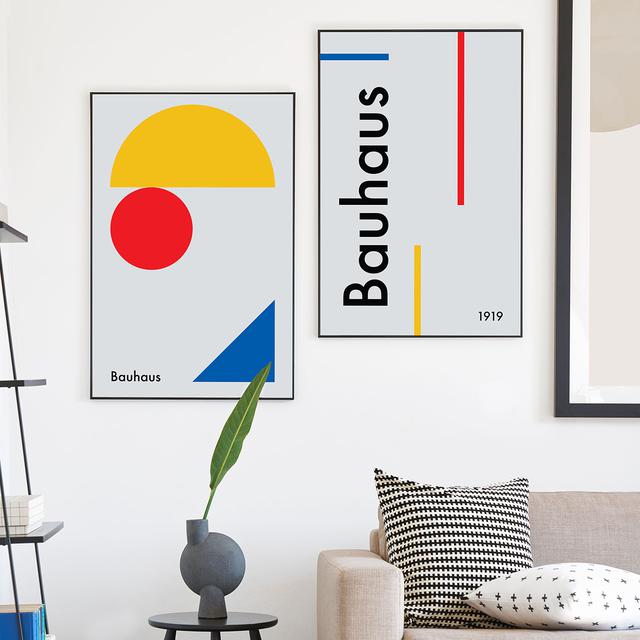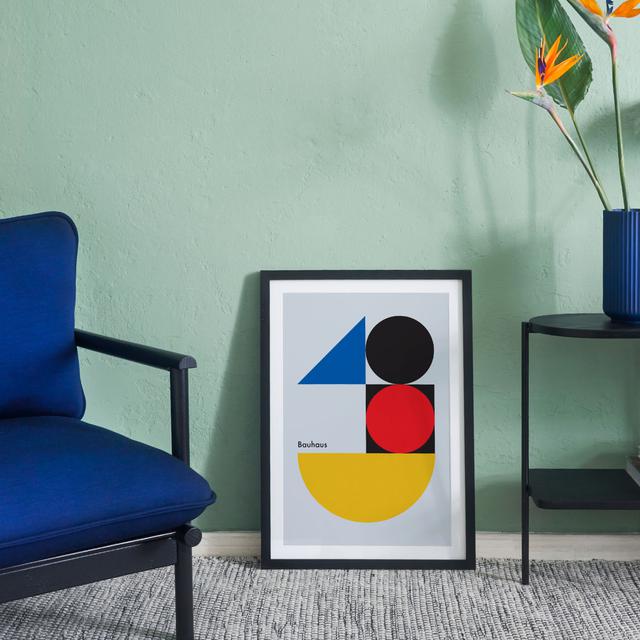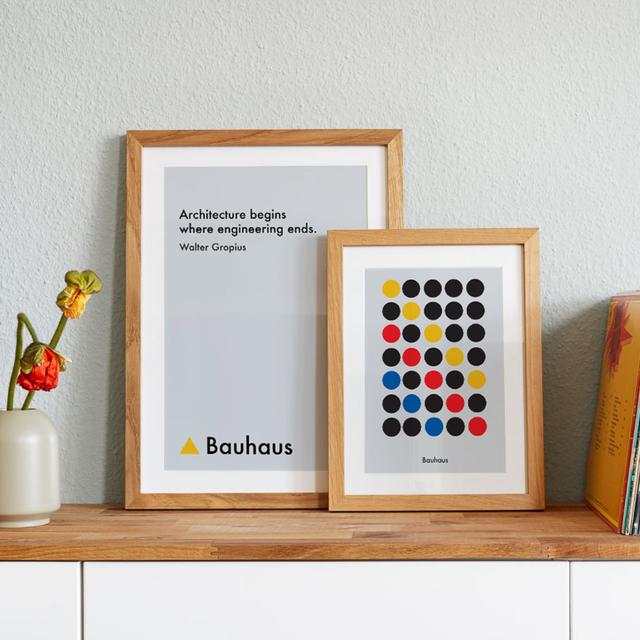Bauhaus turns 100 this year, and it’s certainly a centenary worth celebrating! The German art school, conceived by Walter Gropius, laid the foundations for one of the most influential aesthetic movements of the modern era.
Revolutionising careers in graphic design, influencing architecture for decades to come, Bauhaus has a legacy worth remembering—learn all about it in our 6-step tribute to the likes of Gropius and co.
1. The idea that ‘less is more’
When it comes to minimalism, we tend to think of the simple, clean-cut nature of modern Scandinavian interiors. Yet this design trend actually dates back to the 1920s, when professors and students at the recently-founded German art school, Bauhaus, were intent on breaking away from the flamboyance and pomp that characterised turn-of-the-century art. Thus a minimalist Bauhaus aesthetic was born. Its main features? Three simple primary colours—red, yellow and blue—in the form of basic geometric shapes—mostly squares, circles and triangles. This paradigm shift towards minimalism would go down in art history, influencing artists’ choice of style and technique right through to the present day. Among others, current pioneers include graphic designer Marcin Plonka and Jeanette Stavik Kjøsnes’ Ohio Studio.
2. Making furniture functional
As with minimalism, people generally associate functional furniture with Scandinavia—in particular, a certain well-known brand from Sweden. Yet once again it is, in fact, Bauhaus that lies behind the innovation. By adhering to rudimentary design principles, Walter Gropius’ students developed furniture that was accessible to everyone, in terms of both practicality and affordability. One of the most widely-recognised examples is Michael Thonet’s tubular steel furniture. Taking metal, glass and plastic as his main raw materials, Thonet transformed these into functional household décor using the most affordable of industrial processes. Chairs, tables, you name it—everyone could now easily afford and assemble their own furniture.
3. Architecture in present-day Berlin
It’s not only by attending museum exhibitions that you can revel in the brilliance of the Bauhaus revolution. Take a close look, and you’ll find vestiges of it on your doorstep. Here at JUNIQE’s base, Berlin, there are countless Bauhaus-inspired buildings to admire and explore. This owes itself to the fact that, in addition to a prolonged presence in Weimar and Dessau, the esteemed art school opened its doors in the German capital from 1932-33. Wandering through Berlin today, you can still see where Bauhaus art left its mark—be it the festival and concert venue Funkhaus, one of our team’s favourite haunts, or the Neue Nationalgalerie close to Potsdamer Platz, whose clever conception by Ludwig Mies van der Rohe inspired our Graphics Team to develop a JUNIQE readaptation in poster form.
4. The origins of graphic design
Many people dream of becoming graphic designers; it’s a job which allows for creative self-expression alongside the constant acquisition of technology skills. Yet how did this coveted career path first come about? Once again, thanks to Bauhaus. Faced with the task of promoting their own creations, some savvy students took part in photography training and learned how to supplement their designs with digitally-added text. In this way, the field of digital design was born. While colleges began to launch courses in subjects such as “The Systematics of Advertising”, graphic design officially became recognised as a professional vocation. Given this development, the Bauhaus movement not only revolutionised the world of aesthetics; it also led to the birth of new career paths for budding creatives to pursue.
5. A real cult following
Bauhaus as a concept is as widely-appreciated now as it was during its heyday in the early 20th century. Be it Paul Klee or Wassily Kandinsky, Le Corbusier or Ludwig Mies van der Rohe, countless artists, architects and designers continue to follow in the footsteps of the Bauhaus teachings. Through their work, these devotees are keeping Gropius’ brainchild alive.
6. JUNIQE’s take on Bauhaus
Inspired by the minimalist mantra of ‘less is more’, our Graphics Team has developed an exclusive collection of Bauhaus-style prints. Drawing from the movement’s primary colours and shapes, and taking quotes from Walter Gropius himself, Marlene Brüggemann and Juan Useche created designs that act as our very own in-house reimagination of one of the most seminal aesthetic movements of modern times.
Text: Ina Schulze
Translation: Lucy Woods
Banner: Primary Polygons, B for Bauhaus + Primary Pattern
Photo 1: The Founding Triad
Photo 3: Bauhaus Archive Berlin + Geometric Illusion
Photo 4: Minimalism + Bauhaus 1919
Photo 5: Contrasts in 2D
Photo 6: Gropius - Architecture + Primary Pattern
